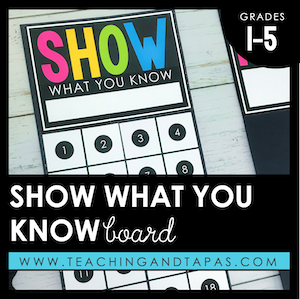How do you keep your students engaged and motivated throughout your lesson? Do you have any special techniques to make keep your students interacting throughout? We know that just calling on one student who raises their hand is not the best way to create learning for everyone. Active engagement is critical.
Below, I have compiled my top five strategies for active engagement throughout a lesson.

(a.k.a. Turn and Tell, or Think Pair Share) Assign thinking partners that students sit next to during group lessons. My group lessons are almost always on our classroom rug. The students know that when they are on the rug, they are sitting next to their partner. In nearly EVERY one of my lessons, I give the students a chance to share their thinking with their partner. For example, during an Interactive Read Aloud – “Is this character likeable, why or why not? Turn and tell your partner what you think”. This way EVERY student in the class is involved rather than just the student you call on when they raise their hand. This totally helps with “blurts” as well.

During a lesson, or after an activity, ask students to choose ONE word, phrase, and sentence to sum it up (or some variation of these three). The students can share this response on piece of paper, a post-it, whiteboard, or with their turn and talk partner. For example, after a science lesson on Aztec homes, ask the students think of one word to describe the homes and share this word on the whiteboard in front of the class. It is actually quite a rigorous activity to find the perfect word!
This strategy can also be used to summarize reading. Ask the student to choose one word, phrase, and sentence that is taken directly from the text that summarizes what they have read. There is not a lot of writing involved, yet a lot of thinking that must go into this activity.
Mirroring is an excellent Whole Brain Teaching technique that is easy to implement and keeps your students engaged. There are much more official methods than what I will describe, but the way I use it is by holding my hands up with palms out, I say “Mirror”. Then I make motions and the students immediately mimic them. This is an great strategy when using manipulatives in math but it can be used across your curriculum. Here is a great example of a teacher using mirroring…


I hope these tips are helpful for you as you as your classrooms heat up. My question for you is: How do you engage ALL of your students during your lessons?
Before you go, grab your SHOW WHAT YOU KNOW board (and get access to so much more in my member’s-only freebie library!)





